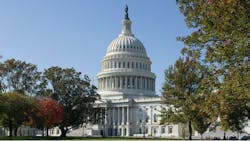National Tank Truck Carriers (NTTC) and American Trucking Associations (ATA) were among 117 organizations urging Congress to pass the DRIVE-Safe Act in a letter sent to the country’s transportation leaders last week.
They say the legislation provides a remedy to the nation’s growing shortage of truck drivers by promoting opportunity and enhancing safety training for emerging members of the trucking workforce.
Although 49 states and the District of Columbia currently allow individuals under the age of 21 to obtain a commercial driver’s license and operate commercial vehicles in intrastate commerce, these same individuals are prohibited by federal law from driving a truck across state lines until they turn 21. The ban on interstate commerce also precludes them from hauling any freight intrastate that originated from out-of-state, such as cargo shipped by air into their state of domicile.
The DRIVE-Safe Act would change this through a rigorous two-step apprenticeship program that creates a path for these drivers to participate in interstate commerce. As the name implies, however, the legislation’s first priority is safety. In order to qualify, candidates must complete at least 400 hours of additional training—far beyond what is required of any other CDL holder in the nation. All qualified drivers participating in the apprenticeship program would be accompanied by an experienced driver in the cab and would only be allowed to drive trucks outfitted with the latest safety technology, including active braking collision mitigation systems, forward-facing, event-recording cameras, speed limiters set at 65 miles per hour or less, and automatic or automatic manual transmissions.
The legislation had strong, bipartisan support in the 116th Congress that spanned the ideological spectrum and was reintroduced last month by Sens. Todd Young (R-Indiana), Jon Tester (D-Montana), Joe Manchin (D-West Virginia), Tom Cotton (R-Arkansas), Angus King (I-Maine), Kyrsten Sinema (D-Arizona), Jerry Moran (R-Kansas) and Jim Inhofe (R-Oklahoma) in the Senate, and by Reps. Trey Hollingsworth (R-Indiana), Jim Cooper (D-Tennessee), Henry Cuellar (D-Texas), Elissa Slotkin (D-Michigan), Jared Golden (D-Maine), Troy Balderson (R-Ohio), Ashley Hinson (R-Iowa), Bruce Westerman (R-Arkansas) and Darin LaHood (R-Illinois) in the House.
In the letter, supply chain leaders cite the impact that the driver shortage is having on their operations, the transportation of goods and consumer prices:
- 70% of the nation’s freight is carried by commercial trucks, and while demand is projected to increase over the next decade, the threat posed by the driver shortage stands to disrupt the continuity of the supply chain. This is especially problematic as the nation and our economy recover from the monumental impacts of the COVID-19 pandemic.
- According to a recent estimate, the trucking industry needs an additional 60,800 truck drivers immediately—a deficit that is expected to grow to more than 160,000 by 2028. In fact, when anticipated driver retirement numbers are combined with the expected growth in capacity, the trucking industry will need to hire roughly 1.1 million new drivers over the next decade, or an average of nearly 110,000 per year.
- The COVID-19 pandemic further exacerbated the truck driver shortage, and the temporary closures of state DMV’s and truck driver training schools dried up the already fragile pipeline of new drivers entering the trucking industry.
- And as a result of the already crippling driver shortage, companies in supply chains across the economy are facing higher transportation costs, leading to increased prices for consumers on everything from electronics to food.
The letter and list of signatories can be viewed here.
